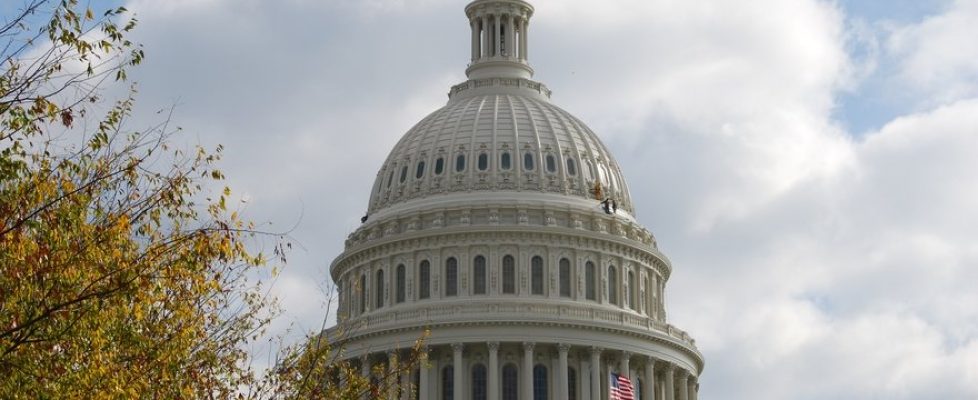House telehealth leaders move to cement regulatory changes for virtual care
Leaders of the House telehealth caucus introduced legislation Thursday to permanently open up access to telehealth services for Medicare patients.
The bipartisan bill , the Protecting Access to Post-Covid-19 Telehealth Act, will extend the use of telehealth that was expanded during the COVID-19 pandemic by eliminating restrictions on the use in Medicare. That would provide a bridge for patients currently using the practices because of the coronavirus crisis and require a study on the use of telehealth during COVID-19, said bill co-sponsor Rep. Mike Thompson, D-California, in a statement.
The bill will expand the use of telehealth for seniors and those on Medicare and ensure that telehealth care be used during future disasters and emergencies, said Thompson, founder and co-chair of the Congressional Telehealth Caucus.
“We know telehealth can be an essential bridge in delivering care, particularly during a crisis and today we are working to ensure telehealth continues in a post-Coronavirus world,” he said.
The bill also was introduced by caucus co-chairs Reps. Peter Welch, D-Vermont, Bill Johnson, R-Ohio, and David Schweikert, R-Arizona, and caucus member Rep. Doris Matsui, D-California.
The proposed legislation will ensure that the “enormous resources invested in making this technology work are not wasted,” Johnson said.
What it would do
The proposed bill would provide many of the regulatory flexibilities that healthcare provider groups have been pushing for during the pandemic, such as removing arbitrary geographic restrictions on where a patient must be located in order to utilize telehealth services and enabling telehealth services to provided to patients in their homes.
The legislation also ensures federally qualified health centers and rural health centers can furnish telehealth services. And the bill would make permanent the temporary waiver authority for the Department of Health and Human Services (HHS) secretary for future emergency periods and the 90 days after the rescinding of a public health emergency period.
Healthcare groups overwhelmingly cheered the legislative efforts to make telehealth a routine part of healthcare delivery.
“The legislation would once and for all remove arbitrary geographic restrictions on all Medicare telehealth services and ensure access for patients for whom traditional office visits don’t always work,” said eHealth Initiative CEO Jennifer Covich Bordenick in a statement.
“We applaud Congressman Thompson and the House Telehealth Caucus for their continued leadership on telehealth and look forward to working with them to advance this critical legislation,” Covich Bordenick said.
Last month, Reps. Troy Balderson, R-Ohio, and Cindy Axne, D-Iowa, introduced a bipartisan bill, KEEP Telehealth Options Act, to lay the groundwork for the permanent expansion of telehealth.
That proposed legislation would instruct HHS and the Government Accountability Office (GAO) to study and report to U.S. Congress on the expansion of telehealth services during the COVID-19 outbreak, the uptake of those services by patients across the country and GAO’s recommendations for enhancing the quality of and access to these services.
It’s also possible that Congress will roll telehealth legislation into a “phase four” coronavirus relief legislation.
Other changes
During the pandemic, the Trump administration has opened up access to telehealth with sweeping—but temporary—changes to reimbursement policies.
In a matter of weeks, most of the barriers to telehealth reimbursement fell away, enabling many of the changes that provider groups have wanted for years: payment parity for virtual visits, the ability to provide telehealth to patients at home and allowing more providers to offer telehealth visits.
What remains up in the air is whether the regulatory flexibility on reimbursement is going to stick around.
Digital health associations and more than 300 organizations sent a letter to Congress calling for meaningful and permanent action to address statutory barriers to telehealth.
The Protecting Access to Post-COVID-19 Telehealth Act of 2020 addresses nearly all priorities (PDF) outlined in the letter, according to the eHealth Initiative.
A CMS official recently said that an upcoming Medicare payment rule will include proposals outlining how the Trump administration plans to permanently expand reimbursement for telehealth services.
But for some changes, such as eliminating geographic and originating site restrictions, congressional action is needed.
“Telehealth services have been a lifeline for more than 9 million seniors during the COVID-19 pandemic. The Protecting Access to Post-COVID-19 Telehealth Act will ensure that this access does not disappear once the coronavirus emergency is over,” said Krista Drobac, executive director of the Alliance for Connected Care, in a statement.

